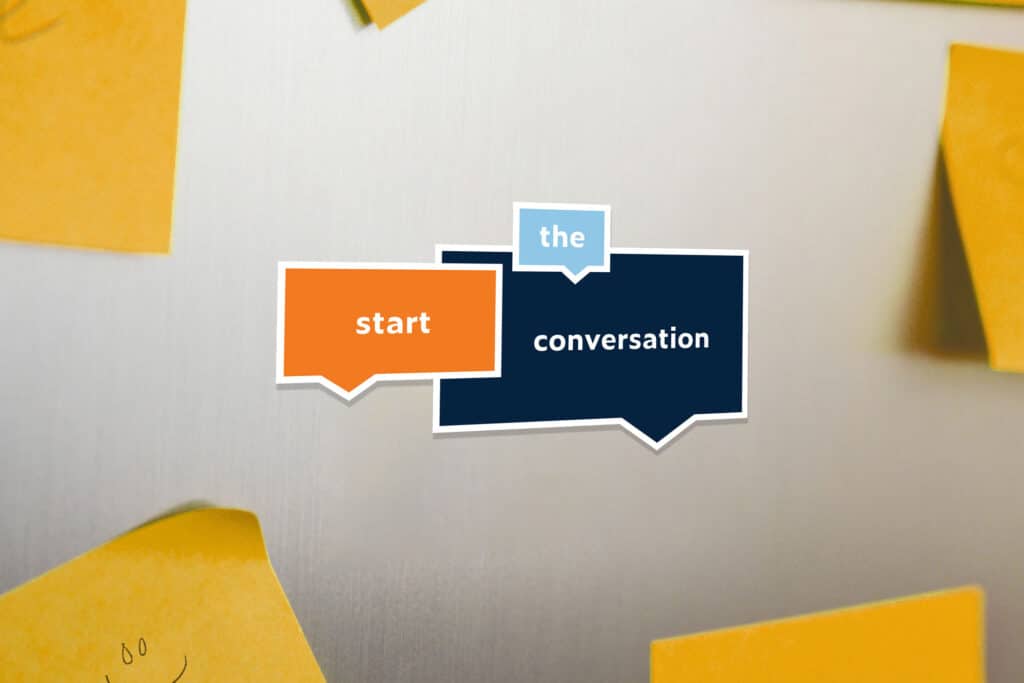Emma Case (00:00):
Welcome to Inside The Senior Alliance, a podcast exploring resources and issues in the field of aging. I’m Emma Case, Planning and Advocacy manager at The Senior Alliance, the Area Agency on Aging, serving Western and Southern Wayne County. Joining me today is Renee Roederer, the Senior Director of Programs and Community Care at the Epilepsy Foundation of Michigan. Renee, thanks for joining me today.
Renee Roederer (00:19):
Thank you for having me. It’s a delight to be here.
Emma Case (00:21):
The Epilepsy Foundation of Michigan is dedicated to empowering individuals with epilepsy and is the only statewide nonprofit focusing on epilepsy. Can you start by telling me more about the foundation, the mission, the vision, and the ways that you assist individuals with epilepsy?
Renee Roederer (00:35):
Our organization, the Epilepsy Foundation of Michigan, has been a part of the state and active in this work since 1948, and our mission is that we lead the fight to overcome the challenges of living with epilepsy and to accelerate therapies, to stop seizures, find cures, and save lives. First and foremost, we want every person living with epilepsy and their families and their friends to be able to live their best life. We want people to be able to go after their goals, do the things that they want to do in community, in their lives, and we are also doing that front facing work of building a community where it is the best possible community for people with epilepsy to live in. Meaning that people are aware of epilepsy, meaning that we are reducing stigma and we’re creating the kinds of opportunities in the community where people can really thrive.
Renee Roederer (01:29):
We are very committed to our community care and we do that in a variety of ways. We have our Here for You Helpline, and this is a number that people can use to reach us. They can also go to our website and submit a request there, and that will reach us this wonderful team of committed people where folks can ask us questions about diagnosis and treatment, about resources, what is out there and how do we find it, how do we best connect with what we need? Sometimes they’ll call us because they’re just having a rough day and they need a listening ear, and we are very glad to provide that. So our Here for You Helpline serves more than 1500 people every single year and we would love for you to connect with us. We have a community group, we call them our call and connect network.
Renee Roederer (02:18):
We have four support groups that we offer virtually to people across the state and we recently added a fifth for the Upper Peninsula, but those are for adults, for young adults, parents and family caregivers and or older adults. We have a call and connect group that meets every Wednesday from 4 to 5:00 PM. You can find that on our website as well and register there. And we would love to introduce you to other older adults who have epilepsy and also their caregivers. So that’s important to us. And then we have a number of educational programs. We have three conferences every year. One is in Grand Rapids on the west side of the state in April, and it’s our epilepsy innovation round table where we explore what is new in epilepsy care and treatment. Also, what is new in advocacy. And we have a back to school conference, not surprisingly, in August.
Renee Roederer (03:11):
That one is virtual and on demand. And then our largest conference of the year is the Wellness and Epilepsy Conference, which takes place in November. That is National Epilepsy Awareness Month and it’s in Livonia. It’s a beautiful time to gather, to learn to grow. And then the last thing I’ll mention now is that we have a really robust seizure recognition and first aid training program. People can become certified in seizure first aid, and we are able to offer those programs virtually in person and also on demand because we want people to be empowered to live well with epilepsy and to do so safely.
Emma Case (03:50):
Epilepsy is the fourth most common urological disorder in the US affecting people of all ages, including a significant number over 55. For those who may not be familiar, can you explain what epilepsy is and how it affects individuals at different ages?
Renee Roederer (04:04):
Absolutely. First, I want to say something that might be surprising to many people. One in 26 people will be diagnosed with epilepsy at some point in their lifetime. So that is approximately 4% of the population and about 1% of the population is living with epilepsy actively at any time. Another thing that’s important to mention is that an epilepsy diagnosis can come at any time in the lifespan, but the onset of epilepsy is most common in childhood and in older age. So that’s why this conversation is so important here. Epilepsy is diagnosed in one of two circumstances. What is happening when a brain is having a seizure is there is an electrical disturbance happening there with the neurons in our brains and they begin to fire in a synchronized way. And that can create lots of different kinds of symptoms in the body and sensations depending on where that seizure is happening in the brain, where the electrical disturbance is taking place.
Renee Roederer (05:06):
And of course how much of the brain is involved in that seizure. But epilepsy is diagnosed when a person has had either two unprovoked seizures or they’ve had one and when they do diagnostic testing, they see that their brainwaves on an EEG indicate that they are probably at risk for more seizures. So what do we mean when we say, uh, unprovoked? There are of course other health conditions where a person might have a seizure and it might not be epilepsy and in fact it could just be a one-time seizure, but it would be provoked, say like if a person has diabetes and their blood sugar becomes really low and then that causes a seizure, that wouldn’t necessarily be epilepsy because it is provoked by something else. But with epilepsy it’s unprovoked, it just happens and there may be conditions that trigger that seizure, but it’s not from another acute condition. So that is when epilepsy is diagnosed. And it’s important to talk about this because seizures can happen really at any time out in public, certainly with people who have this condition, but also that first onset seizure can happen. And so we want everyone to be educated how to recognize a seizure, how to best respond, and how to uphold the dignity of people who are having that experience.
Emma Case (06:20):
How does epilepsy present itself differently in older adults compared to other ages? And are there unique challenges that they may face that might not be as common in younger people with epilepsy?
Renee Roederer (06:30):
Yes, that is definitely true. One thing to mention is that there are so many different kinds of seizures, and this is true across the age spectrum as well. So a person may simply blank out and stare for a short period of time. They might have motor movements, physical reactions, they might have their muscles really tense up or shake. They might not so much have those, you know, acute motor movement, but have unique sensations that are happening in their body. Maybe they feel tingling or hear a sound that isn’t there or see something that isn’t there in that moment. People can be aware during certain types of seizures and could be unaware during other kinds of seizures. And all of that is true across the spectrum of age. One thing that is unique for older adults is learning how to recognize a seizure, which could be confused with other kinds of symptoms.
Renee Roederer (07:22):
So to give one example, the most common kind of seizure is called a focal impaired awareness seizure. Focal means that the seizure, the electrical disturbance is happening in one part of the brain. And impaired awareness means that a person is not fully aware of what’s happening in that time. And so they may wander aimlessly a bit, they may pick at their clothing or have lip smacking or stare off a little bit. Sometimes with older adults, people may wonder like, is a stroke happening? Is a seizure happening? Is a person with dementia with kind of a blank stare experiencing something connected to their dementia or is this a seizure? So I think some of those symptoms can look the same. And so we need to make sure that we’re caring well for a person and we’re recognizing more possibilities and of course, above and beyond, regardless of what is causing that symptom to keep someone safe and to make sure they’re cared for well.
Renee Roederer (08:17):
I think that does complicate things, especially when those symptoms are new and an individual or a family is looking for a diagnosis. Likewise, this is not true across the board, but sometimes people with epilepsy have challenges with their memory, particularly their short-term memory, and that can be caused by the epilepsy itself or it can be a symptom or a side effect rather of their medications. And so again, with an older adult, if there are some challenges with memory, hey is this something connected to epilepsy or is this, you know, dementia or just older age? And so I think those are a little bit more complex. And so it’s really helpful to see specialists, neurologists, and epileptologists who can help treat that and try to distinguish those symptoms and what there causes may be.
Emma Case (09:04):
Are there different triggers for older adults with epilepsy than there are with younger individuals?
Renee Roederer (09:09):
I would say largely the triggers can be the same or similar. You know, the big three features for most people with epilepsy or the most common would be missed medication. Sometimes missing just one dose can create a seizure and that is of course a really challenging thing. Stress is a big trigger for seizures. So that’s another very common one. The other would be not getting adequate sleep or good quality sleep. Sleep can obviously really impact our brains, can be very restorative, not getting enough of it can be challenging. So those are the most common triggers for people with epilepsy across the age spectrum. And of course there can be some others. Probably what is most commonly known out in the community is people think about photosensitivity, which is a trigger based on flashing lights or certain patterns, visual patterns. That can be a trigger for some people, although it’s less common than most people think. About 3% of people with epilepsy have seizures triggered by photosensitivity. So I want to go back to missed medication though, because if an older adult is also having difficulty with memory, it’s really important to make sure that they either have a system to remember taking those meds or that they have some help with that. Because I can imagine that being an especially challenging trigger sometimes for older adults.
Emma Case (10:27):
There are a lot of misconceptions surrounding epilepsy. What are the most common ones that you’ve encountered and how do these impact people living with epilepsy?
Renee Roederer (10:36):
So common misconceptions, I think first and foremost is just a general fear. And by the way, I do have some empathy for this because we are all as human beings afraid of what we don’t understand. And so there can be this fear of like being around a person with epilepsy concern, like, will I know what to do? What’s going to happen? But I really feel like it is on the community at large and people who may have that fear to do that work to become educated and reduce that fear. And of course that’s what we are all about. We want that community made aware and empowered and understanding and compassionate. So we’re always doing that work, right? Because I think what becomes a challenge is sometimes when that fear gets large, you know, rather than feeling like, oh wait, I need to understand this and I need to learn more.
Renee Roederer (11:24):
Sometimes people in the community, places of employment or situations of education can be punitive for the person with epilepsy or really exclude that person. And so that can lead to a feeling of isolation. We always want to break that down. Other misconceptions, thankfully this is not so common anymore, but you know, sometimes people have feared that epilepsy is contagious in some way. You can catch epilepsy from another person with epilepsy. Another really common misconception, which again has been reduced thankfully, but it’s still out there, is that when a person is having a seizure, you need to put something in their mouth to prevent them from biting their tongue or swallowing their tongue was even a belief. But thankfully no one <laugh> with a seizure or otherwise can swallow their tongue. And I’m glad for that. And in fact, it is very dangerous to put something in a person’s mouth during their seizure because that can create injury for their teeth and tongue and or their jaw. We never want that and it can also block the airway when someone’s having a seizure. So those are some of the most common misconceptions I would name.
Emma Case (12:26):
What can we do to challenge these misunderstandings and reduce the stigma around epilepsy?
Renee Roederer (12:31):
Well, one thing I would highly recommend is doing seizure recognition and first aid training. This is so important and we have many possibilities for people to do it. There are times where our staff members will go and will train schools or community settings. We’ve done that with senior centers. We’ve done that in assisted living to help staff understand and be able to recognize what they are witnessing when a seizure happens and of course how to best respond and keep someone safe. We also offer that virtually and we have on demand training. I love this. A 90 minute training that people can take on their own time. They can formally become certified and that is something you can, you know, claim on a resume or on a, you know, in some kind of setting where that might be important. Above and beyond we just want people to be able to respond and to know that there is nothing to be afraid of. Most seizures in fact are not medical emergencies. There are some cases in which, which that is true, especially if the seizure is prolonged in some way or if someone has become injured or if this is their first seizure ever. But most of the time it’s not an emergency and we want people to know that they can respond well.
Emma Case (13:40):
Many older adults that we encounter at The Senior Alliance rely on caregivers, family members or close friends for support. What do caregivers need to know when assisting someone with epilepsy?
Renee Roederer (13:51):
The very first thing I want to say is that we are here for caregivers. That is an absolute part of our mission. And so when I mentioned our older adult call and connect time on Wednesdays from 4 to 5:00 PM our weekly Zoom support group, we also offer that to family caregivers because we know that is a really unique role. Whether you are a spouse of someone living with epilepsy or perhaps an adult child, even a sibling. I’ve had siblings really take in older adults with epilepsy and care for them well. So the first thing to say is we’re here for you. We want you to know that your wellbeing matters as well. And so we’re also here to guide you and care for you as you seek to care for yourself, which is important. Sometimes caregivers will put their own needs to the side and we know how important that is.
Renee Roederer (14:39):
In terms of how to care well for a person with epilepsy, when you’re in that caregiving role, one person with epilepsy is just one person with epilepsy. So the needs will be unique person to person. But some of the common things I can imagine being aware of would be of course that seizure recognition and first aid to know what your loved one’s patterns may be when they have a seizure and they know how to respond. Also, being able to keep your home or your loved one’s home as safe as it can be to have those emergency numbers lined up when those moments are needed. Also to be able to help your loved one find their own peer support, right <laugh>. We want no one on this journey to feel alone and to know that there are people out here who understand and to recognize that the Epilepsy Foundation of Michigan is here for your own education as well.
Renee Roederer (15:25):
You don’t have to go at this alone or unaware. We want to accompany you every step of the way. Caregivers may also, at times, depending on the person and that person’s unique needs, need to help with things like medications or doctor visits. At the Epilepsy Foundation of Michigan, we can help connect you and your loved one to epilepsy specialists who are in our state. We would say that anytime a person has tried two anti-seizure medications at the appropriate dosage and the appropriate amount of time and they’re still having seizures, we always would recommend that a person in those circumstances see an epileptologist. And epileptologist is a word some people might not know, but it is a person who’s kind of a super specialist in epilepsy. There are neurologists out there who treat epilepsy very well and they see people with a variety of neurological conditions. Epileptologists have done extra training and have board certification in epilepsy and they see epilepsy patients all day long. That’s what they do. So we like to connect people to those specialists. So we’re here for any of your questions and to accompany you on this journey.
Emma Case (16:32):
Navigating the healthcare system can be complex for older adults, especially when they have epilepsy. How can their families and themselves be better advocates for healthcare and accommodations?
Renee Roederer (16:44):
Yes, that’s true. And we know navigating the healthcare system can be difficult for people of any age. You know, when you’re diagnosed with a condition you don’t know what you don’t know, or sometimes you don’t even know what question to be asking. And that is one reason that we are big believers in peer support, right? If you can meet some people along this journey who have navigated some of these things before, who know some really important questions to ask, I think that’s a wonderful thing. You mentioned accommodations and that’s another important consideration and one that caregivers, they also play a unique role in, you know, alongside the person living with epilepsy. People with epilepsy have a disability that is covered under the Americans With Disabilities Act. And as such they have rights in the workplace and community spaces in healthcare settings. And so we want to make sure that people are empowered in those rights, that they are protected from abuse, that they are able to have the accommodations they need if they’re still in their working years and want to be doing that to be able to do that.
Renee Roederer (17:44):
Another thing I want to mention is transportation. We haven’t quite talked about that yet. And that’s another important role that caregivers can play as well because people with epilepsy have to be seizure free for six months in order to be able to drive in the state of Michigan. So sometimes if a person is having seizures six months at a time or more frequently, then that is going to involve needing some rides sometimes. So in terms of that advocacy and in terms of those accommodations, I don’t want to say that older adults with epilepsy, our wider community and our caregivers also can be involved at the public policy level. We are always looking for what we can support on a public policy level that is going to create better healthcare outcomes, equity in healthcare, accessible healthcare, affordable healthcare, and of course healthcare that can be much more easily navigated. So that is something we are about at the Epilepsy Foundation of Michigan and that’s something that people with epilepsy and also caregivers can get involved in.
Emma Case (18:44):
I’m glad that you brought up policy and advocacy. I know that at the Epilepsy Foundation of Michigan, you guys do a lot of work in the research and the policy and the advocacy and we do as well at The Senior Alliance. Can you tell us more about the initiatives that you’re currently involved in and what advocacy work is being done?
Renee Roederer (19:01):
Our primary policy initiative over the last few years actually has to do with students. While that may seem not as applicable to older adults, I’d say it absolutely is. We have introduced in the recent legislative cycle and are about to reintroduce because we have a new legislative cycle in Michigan, our Seizure Safe Schools Act. This is a piece of legislation that we believe in so much. What it would do is it would require all school personnel to be trained in seizure recognition and first aid. So important. Right now, those requirements don’t exist on a statewide level. And so there are many school districts, many teachers that do seek out that training from us, but we want every student and every family connected to a student to know that they are going to be safe at school. Seizures can happen in the classroom, in the lunch room, on the school bus.
Renee Roederer (19:55):
And so we know that students are protected when people know seizure recognition and first aid. But we also know that school personnel are more empowered. And that is a really important thing because witnessing a seizure is not always easy. That can activate our own nervous system as well. And so we want people to know that they are empowered to act that this does not have to be an emergency in part because they’re in part. So how does this impact older adults? Well, the more we have people out there who are trained in seizure recognition and first aid, the more they are going to be able to recognize that in their families, in their communities, and in all the places that they go. So as we support this legislation and seek to move it through this year, we hope that the wider community gains those skills, right, which can help anybody at any age.
Emma Case (20:44):
Renee, thank you so much for joining me today. We learned a lot in this episode for sure.
Renee Roederer (20:48):
Well, I’m absolutely delighted. Thank you for the work that you do. And of course, thank you for the invitation.
Emma Case (20:53):
If you have any questions about services and programs The Senior Alliance offers, you can call us at (734) 722-2830 or email us at info@thesenioralliance.org. Information about our agency or the programs and services we offer can be found on our website at www.thesenioralliance.org. On Facebook, we can be located by searching for The Senior Alliance. And finally, our X, formerly known as Twitter handle is @AAA1C. I’m Emma Case. Thank you for listening to this episode of Inside The Senior Alliance.
Speaker 3 (21:24):
Inside The Senior Alliance is a production of The Senior Alliance and Blazing Kiss Media.





